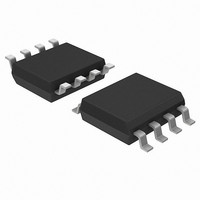DS18S20Z Maxim Integrated Products, DS18S20Z Datasheet - Page 5

DS18S20Z
Manufacturer Part Number
DS18S20Z
Description
IC THERM MICROLAN HI-PREC 8-SOIC
Manufacturer
Maxim Integrated Products
Datasheet
1.DS18S20Z.pdf
(23 pages)
Specifications of DS18S20Z
Sensing Temperature
-55°C ~ 125°C
Output Type
Digital
Voltage - Supply
3 V ~ 5.5 V
Accuracy
±0.5°C
Package / Case
8-SOIC (0.154", 3.90mm Width)
Full Temp Accuracy
+/- 2 C
Digital Output - Bus Interface
Serial (1-Wire)
Digital Output - Number Of Bits
9 bit
Maximum Operating Temperature
+ 125 C
Minimum Operating Temperature
- 55 C
Lead Free Status / RoHS Status
Contains lead / RoHS non-compliant
Available stocks
Company
Part Number
Manufacturer
Quantity
Price
Part Number:
DS18S20Z
Manufacturer:
MAXIM/美信
Quantity:
20 000
Company:
Part Number:
DS18S20Z+
Manufacturer:
Maxim
Quantity:
2 943
Company:
Part Number:
DS18S20Z+T&R
Manufacturer:
MAXIM
Quantity:
2 150
DS18S20
POWERING THE DS18S20
The DS18S20 can be powered by an external supply on the V
pin, or it can operate in “parasite power”
DD
mode, which allows the DS18S20 to function without a local external supply. Parasite power is very
useful for applications that require remote temperature sensing or those with space constraints.
Figure 1 shows the DS18S20’s parasite-power control circuitry, which “steals” power from the 1-Wire
bus via the DQ pin when the bus is high. The stolen charge powers the DS18S20 while the bus is high,
and some of the charge is stored on the parasite power capacitor (C
) to provide power when the bus is
PP
low. When the DS18S20 is used in parasite power mode, the V
pin must be connected to ground.
DD
In parasite power mode, the 1-Wire bus and C
can provide sufficient current to the DS18S20 for most
PP
operations as long as the specified timing and voltage requirements are met (see the DC Electrical
Characteristics and the AC Electrical Characteristics). However, when the DS18S20 is performing
temperature conversions or copying data from the scratchpad memory to EEPROM, the operating current
can be as high as 1.5mA. This current can cause an unacceptable voltage drop across the weak 1-Wire
pullup resistor and is more current than can be supplied by C
. To assure that the DS18S20 has sufficient
PP
supply current, it is necessary to provide a strong pullup on the 1-Wire bus whenever temperature
conversions are taking place or data is being copied from the scratchpad to EEPROM. This can be
accomplished by using a MOSFET to pull the bus directly to the rail as shown in Figure 4. The 1-Wire
bus must be switched to the strong pullup within 10µs (max) after a Convert T [44h] or Copy Scratchpad
[48h] command is issued, and the bus must be held high by the pullup for the duration of the conversion
(t
) or data transfer (t
= 10ms). No other activity can take place on the 1-Wire bus while the pullup
CONV
WR
is enabled.
The DS18S20 can also be powered by the conventional method of connecting an external power supply to
the V
pin, as shown in Figure 5. The advantage of this method is that the MOSFET pullup is not
DD
required, and the 1-Wire bus is free to carry other traffic during the temperature conversion time.
The use of parasite power is not recommended for temperatures above 100°C since the DS18S20 may not
be able to sustain communications due to the higher leakage currents that can exist at these temperatures.
For applications in which such temperatures are likely, it is strongly recommended that the DS18S20 be
powered by an external power supply.
In some situations the bus master may not know whether the DS18S20s on the bus are parasite powered
or powered by external supplies. The master needs this information to determine if the strong bus pullup
should be used during temperature conversions. To get this information, the master can issue a Skip ROM
[CCh] command followed by a Read Power Supply [B4h] command followed by a “read-time slot”.
During the read-time slot, parasite powered DS18S20s will pull the bus low, and externally powered
DS18S20s will let the bus remain high. If the bus is pulled low, the master knows that it must supply the
strong pullup on the 1-Wire bus during temperature conversions.
5 of 23












